Bishop’s Square Park
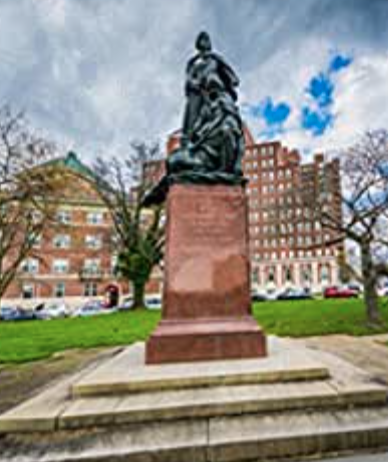
1917 History of the Confederate Womens' Movement
Dedicated in 1917, the privately and publicly funded sculpture by MICA instructor J. Maxwell Miller was part of an effort across the south to honor the sacrifices of Confederate women. Paid for by United Confederate Veterans, the Maryland Chapter of the United Daughters of the Confederacy, and the State of Maryland, it portrays a dying Confederate soldier with a tattered Confederate Battled Flag and two women, one cradling him and another standing, peering into the horizon. Inscriptions include “The Brave at Home” and “In difficulty and danger, regardless of self, they fed the hungry, clothed the needy, nursed the wounded, and comforted the dying.”
For a hundred years, the statue of a grieving mother gazed down from a pedestal in a park near the Johns Hopkins University campus in North Baltimore, her Confederate soldier son dying nobly in her arms.
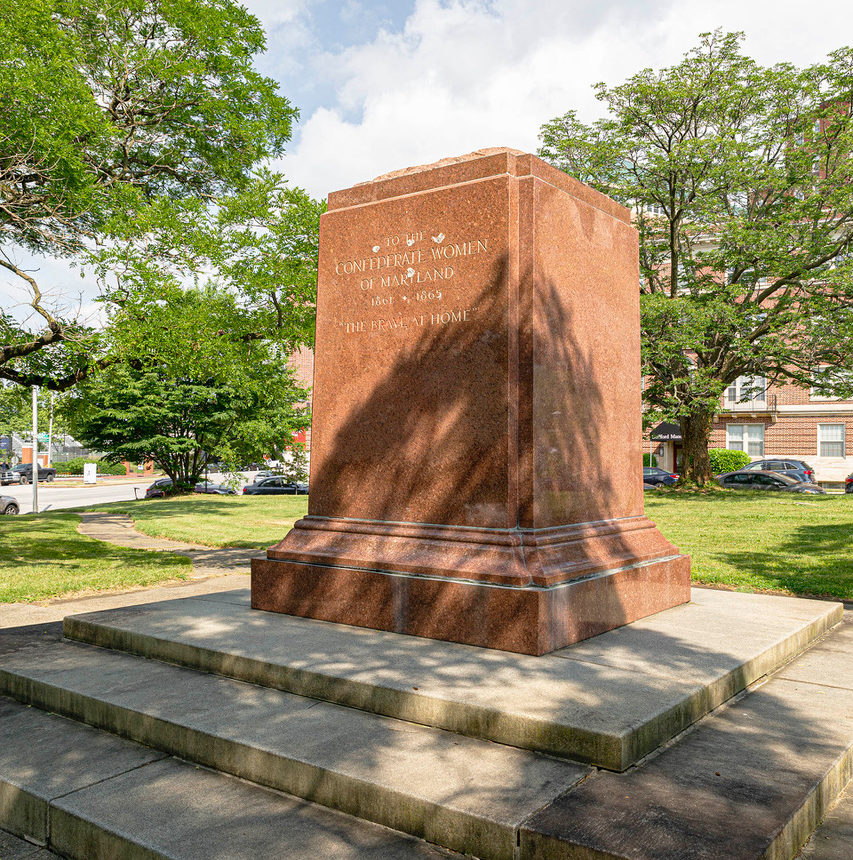
2017 Statue taken down
2015 Mayor Stephanie Rawling-Blake Appointed Special Commission to consider what to do what the monuments.
In 2015 after the self-described white supremacist Dylann Roof massacred nine African American worshippers in a church in Charleston, South Carolina, Baltimore’s Mayor Stephanie Rawlings-Blake appointed a special commission to consider what to do with the monuments. It was decided that the removal of the 4 statues in Baltimore was cost-prohibitive, and instead would provide explanatory plaques at all four sites https://www.baltimoresun.com/maryland/baltimore-city/bs-md-ci-confederate-monuments-20160914-story.html
But in August 2017, a white nationalist rally in Charlottesville, Virginia, that turned deadly inspired her successor, Democrat Catherine Pugh, to order all four taken away.
Workers quietly completed the task the night of Aug. 16, 2017. The next morning, Baltimore awoke to the empty pedestals left behind. The statues are kept in an undisclosed location
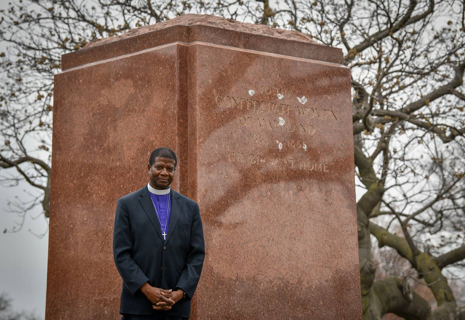
The Reverend Eugene Sutton leads rally
Rev Eugene Sutton, Bishop of the Episcopal Diocese of MD.
One prominent faith leader says it speaks well of Baltimore that the city not only had the courage to formally reject, and eventually remove, monuments that many found hateful, but that it did so peacefully and is taking the time to weigh its options.
The Right Rev. Eugene Taylor Sutton, the bishop of the Episcopal Diocese of Maryland, works at the Cathedral of the Incarnation, directly across Charles Street from where the Confederate Women’s Monument stood from 1917 to 2017.
He labored there for years before taking much note of the statue, he said, let alone wrestling with its meaning. But once the new national conversation on race put it in the spotlight, he began leading the diocese in prayer about how to turn the space into something positive.
Sutton, the diocese’s first Black leader, led a rally at the pedestal this month to commemorate the life of the Right Rev. Barbara C. Harris, the first woman to be consecrated (in 1989) as a bishop in the worldwide Anglican Communion, the denomination of which the Episcopal Church is a part. The group held a banner depicting Harris across the pedestal as a way of honoring the late bishop, a longtime civil rights activist who died last year.
“Public spaces should be for all the people — all the people,” he said. “We deliberately rallied there to help redeem that space.”
He isn’t the first to try reclaiming the sites.
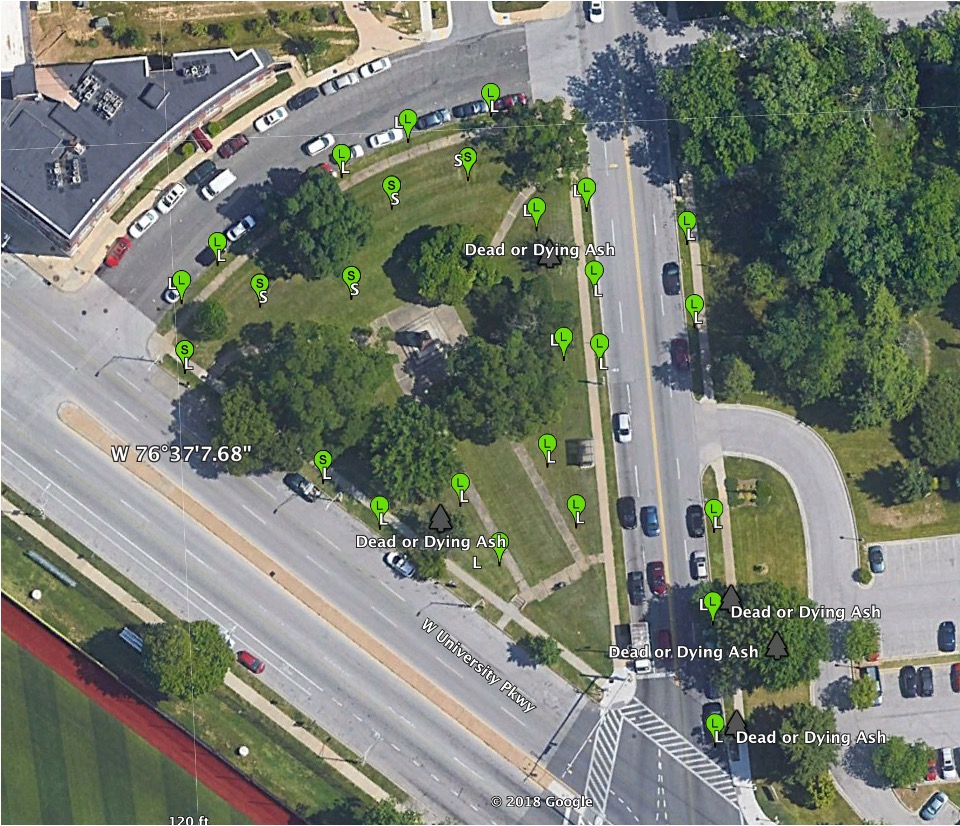
Spring 2018: New trees for the park
The Cathedral of the Incarnation and One Water Partnership paid for the new trees that were planted in this area. The large trees are canopy street trees such as oaks and elms. The small trees are hawthorns and service berries. Fred Chalfant, former president of Tuscany-Canterbury pushed the project along.
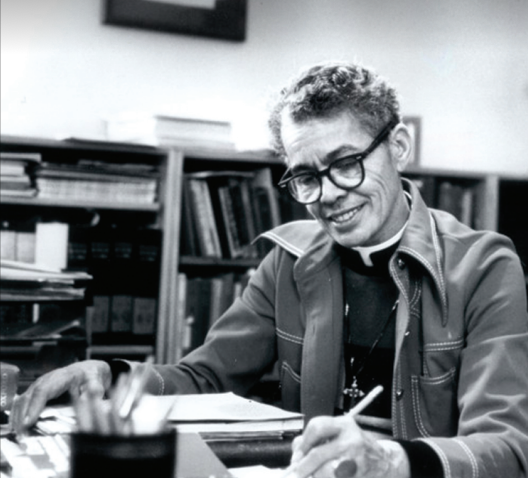
New Statue Planned
Members of the Pauli Murray Project addressed the TCNA general meeting on November 2, 2021 with the request to support a statue for Dr. Rev. Murray in Bishop’s Square Park. The TCNA Board meeting on November 3, 2021 unanimously voted to support their request. This is the first step to make this happen. The Pauli Murray Project Team of the Episcopal Church of Maryland will take the request to the City Council and eventually to the Baltimore Arts Commission. Read more